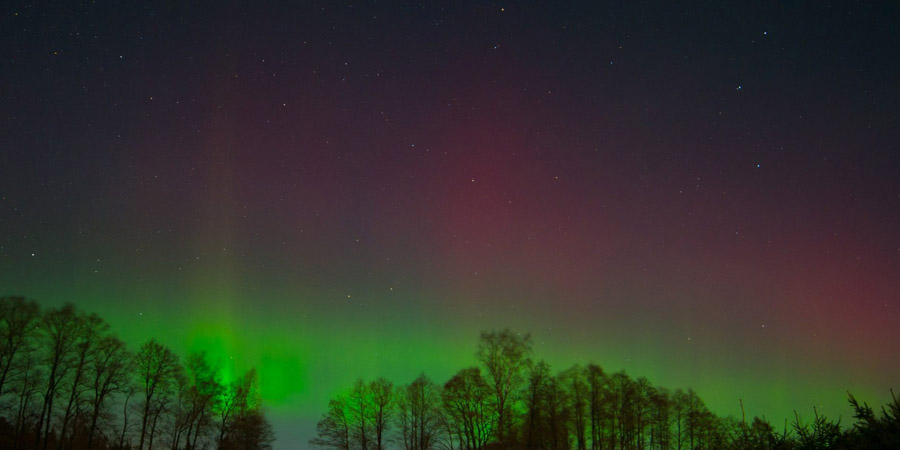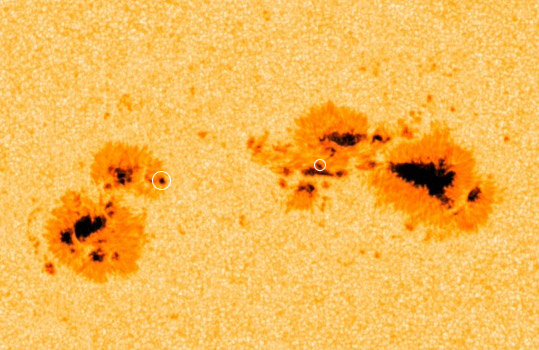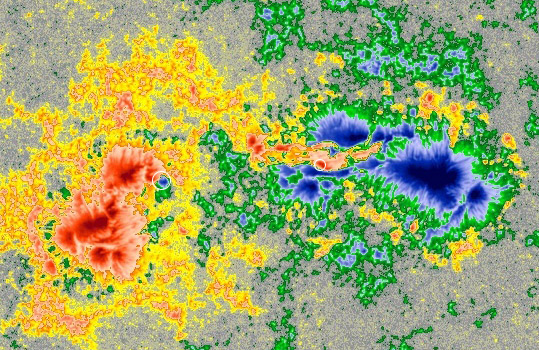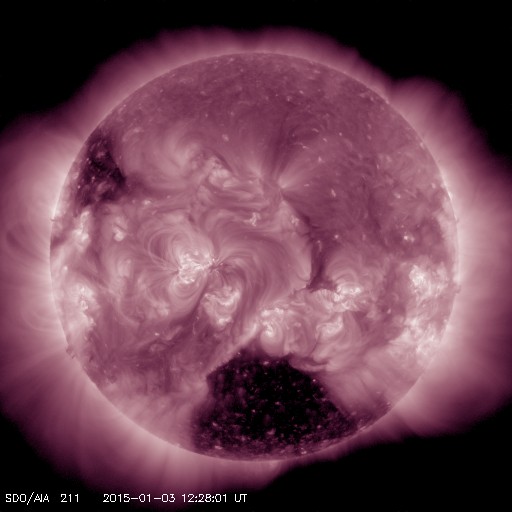First M-class solar flare and geomagnetic storm of 2015
Saturday, 3 January 2015 12:52 UTC

Solar activity increased to moderate levels thanks to an impulsive M1.1 (R1-minor) solar flare that peaked at 09:47 UTC from sunspot region 2253. There was no coronal mass ejection associated with this event. We are also under the influence of a coronal hole high speed stream and we even reached the G1 minor geomagnetic storm threshold in the early hours of 3 January according to the NOAA SWPC. Aurora were seen from many high latitude locations. Our header image was captured last night by Jüri Voit from Estonia. Stunning!
M1.1 solar flare
Solar activity increased to moderate levels thanks to an impulsive M1.1 (R1-minor) solar flare that peaked at 09:47 UTC from sunspot region 2253. There was no coronal mass ejection associated with this event.
Sunspot region 2253 increased in magnetic complexity and now has two delta structures making this a sunspot region with a clear Beta-Gamma-Delta magnetic layout. One of the delta spots can be found near the leader spot and one near the larger trailer sunspots. While the delta structures are not large, there is enough overall magnetic mixing to conclude that more M-class flares are very much possible.


M-class flare probability for the coming 24 hours: 40% chance
X-class flare probability for the coming 24 hours: 5% chance
Solar activity will likely be at low levels but there is a good chance that we stay at moderate levels in the next 24 hours. It is worth noting that sunspot region 2253 is now in an earth-facing position so any eruption from sunspot region 2253 could lead to an earth-directed coronal mass ejection. All the other sunspot regions on the earth-facing disk are unremarkable. Any activity will likely come from sunspot region 2253. For all an overview of all the sunspot regions on the earth-facing disk right now please visit this page.
Coronal hole high speed stream
A coronal hole high speed stream has arrived at Earth and caused a brief G1 minor geomagnetic storm in the early hours of 3 January according to the NOAA SWPC. This stream likely coming from a smaller coronal hole which was equatorial. A much darker and larger coronal hole near the Sun's southpole is now facing Earth so we will likely continue to see enhanced solar wind streams in the days ahead. More enhanced auroral displays are possible in the days ahead so keep your eyes (and camera!) on the sky if you are at a high latitude location.

Images: NASA SDO and Jüri Voit.
Thank you for reading this article! Did you have any trouble with the technical terms used in this article? Our help section is the place to be where you can find in-depth articles, a FAQ and a list with common abbreviations. Still puzzled? Just post on our forum where we will help you the best we can!
Latest news
Latest forum messages
Support SpaceWeatherLive.com!
A lot of people come to SpaceWeatherLive to follow the Sun's activity or if there is aurora to be seen, but with more traffic comes higher server costs. Consider a donation if you enjoy SpaceWeatherLive so we can keep the website online!

Space weather facts
| Last X-flare | 2025/01/04 | X1.85 |
| Last M-flare | 2025/01/22 | M1.3 |
| Last geomagnetic storm | 2025/01/04 | Kp5 (G1) |
| Spotless days | |
|---|---|
| Last spotless day | 2022/06/08 |
| Monthly mean Sunspot Number | |
|---|---|
| December 2024 | 154.5 +2 |
| January 2025 | 145.2 -9.3 |
| Last 30 days | 162 +43.1 |


